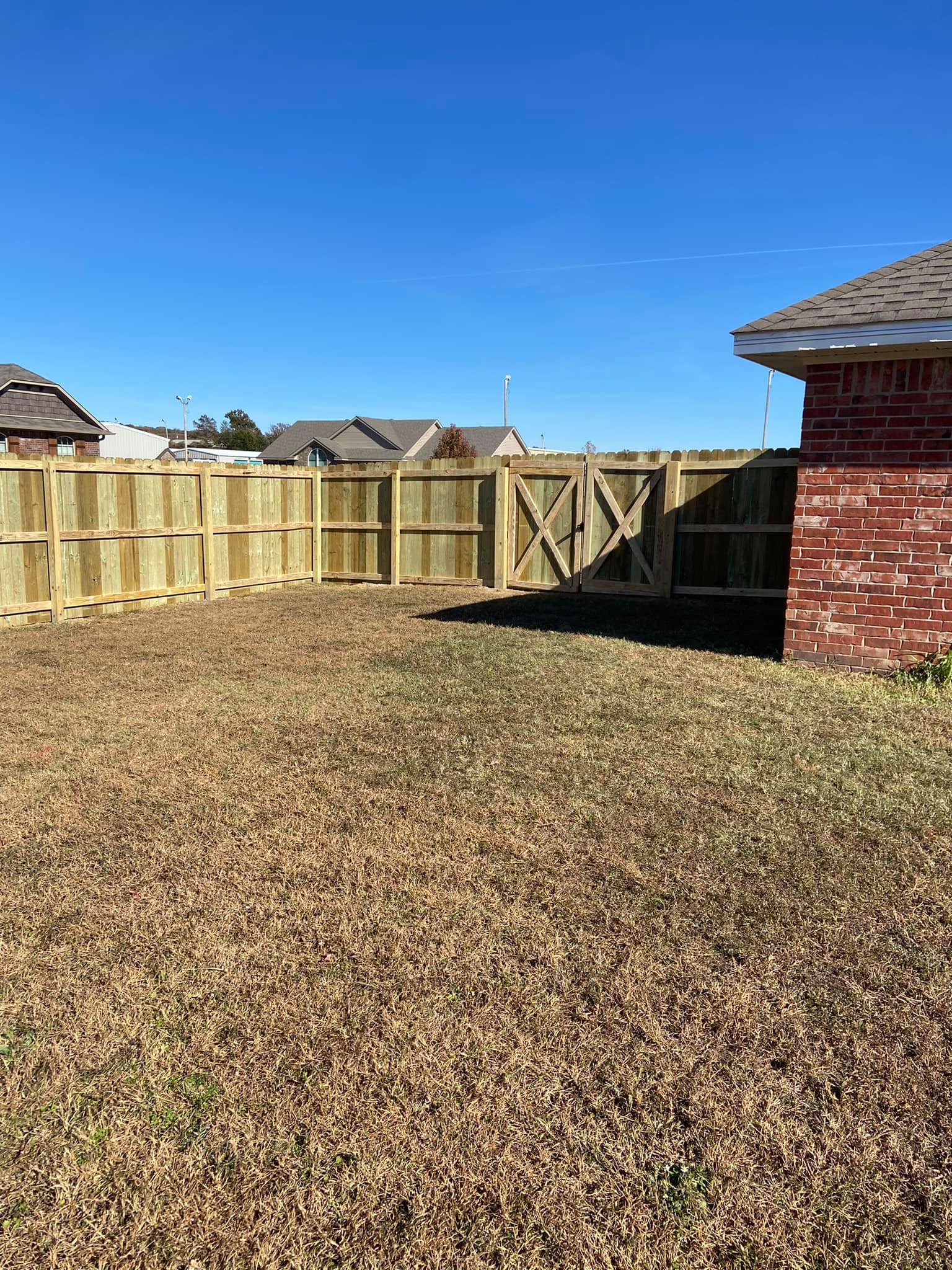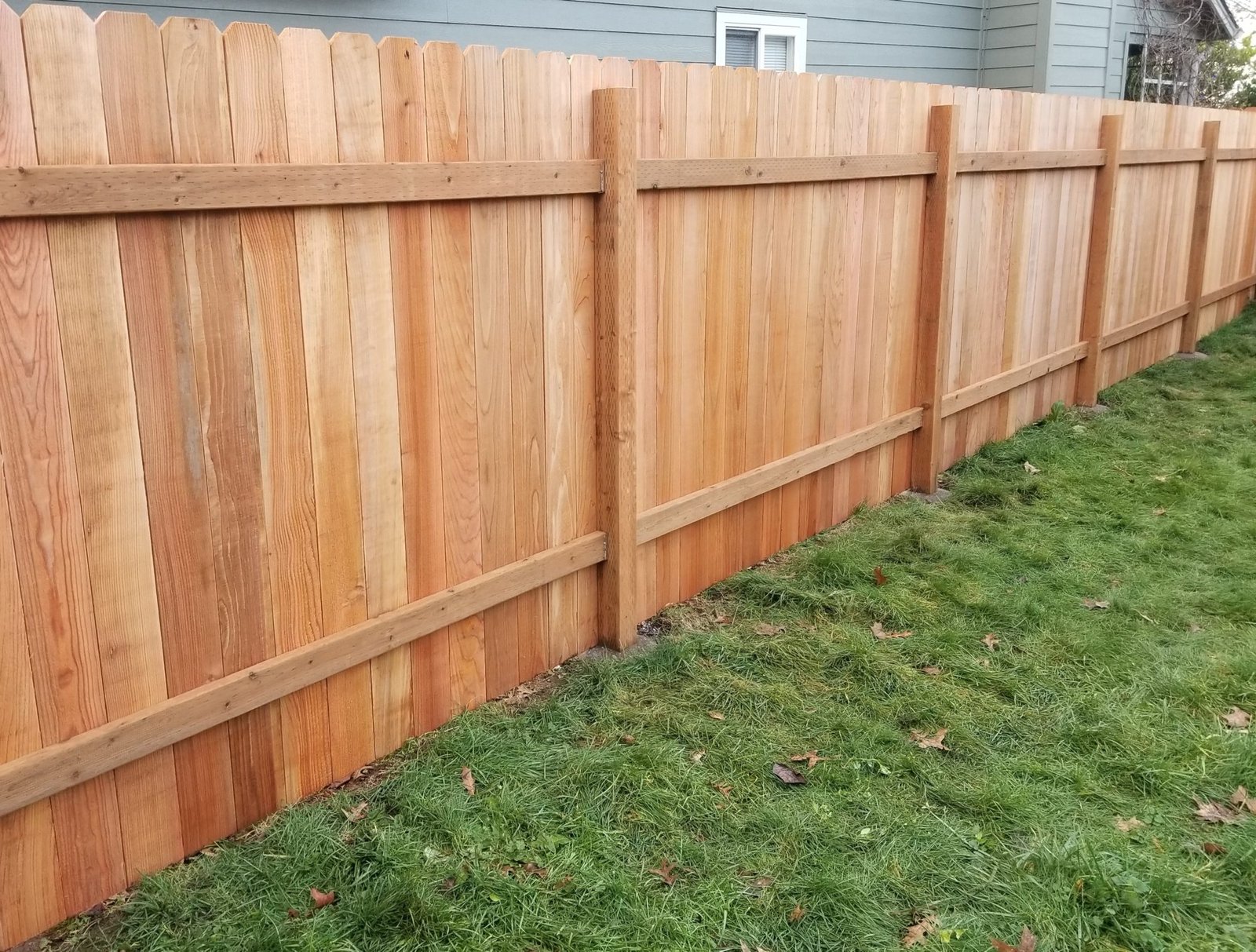Local Wood Fence Installation Near Me Fort Smith AR: Expert Fence Installers at Your Service
Local Wood Fence Installation Near Me Fort Smith AR: Expert Fence Installers at Your Service
Blog Article
Step-by-Step Guide to Setting Up a Wood Fencing for Your Home or Building
Installing a wood fence can significantly improve both the capability and aesthetic charm of your building. Comprehending these actions not just ensures a sturdy setup yet also contributes to long-term contentment.
Preparation Your Fence Setup
When starting the installment of a wood fencing, cautious preparation is vital to make sure a successful outcome. Begin by examining the purpose of the fence-- whether it is for personal privacy, safety, or appearances-- because this will affect the style and format. Next, review the home lines, making sure to confirm the borders through a survey or title deed to avoid disputes with next-door neighbors.
Consider local zoning house owners and legislations' organization guidelines, as these might dictate fencing height, design, and products. It is recommended to get the needed permits prior to beginning work, as this can prevent lawful difficulties later on.
Furthermore, consider the terrain and dirt problems of your home. Uneven ground may call for added changes throughout setup, while rough soil may necessitate specific devices.
Last but not least, create a thorough strategy that consists of measurements, the variety of blog posts, and the spacing between them. A clear design will promote the installation procedure and guarantee that you have all needed products handy. By adhering to these planning actions, you can establish a strong foundation for an effective timber fencing installation.
Selecting the Right Materials
Choosing the proper products for your timber fencing is crucial to making sure resilience and aesthetic charm. One of the most usual sorts of wood made use of for fencing include cedar, redwood, and pressure-treated pine. Cedar and redwood are normally resistant to decay and bugs, making them exceptional options for durability. Their rich shades and all-natural grain patterns additionally improve the visual charm of your property.
Pressure-treated want is another prominent choice, as it is frequently a lot more cost effective. It needs routine upkeep and therapy to extend its life-span. When selecting wood, consider the climate of your region; for instance, areas with high moisture might gain from timber varieties with higher resistance to wetness.
Additionally, you must evaluate the fencing style and function. A picket fencing might call for different product specs contrasted to a privacy fencing. Choose for thicker boards for structural stability, especially in high-wind locations. Finally, take into consideration the surface; untreated timber may call for staining or securing to safeguard against climate components. By meticulously selecting your products, you can guarantee that your timber fencing will certainly stand the examination of time while matching your home's landscape.
Preparing the Installment Site

Preparing the installation site is a critical action in making sure the successful building of your timber fencing. Correct preparation not just promotes a smoother installation process however also contributes to the longevity and security of the fencing.

Next, evaluate the terrain. Eliminate any type of challenges such as rocks, roots, or debris that might hinder the installation procedure. Consider leveling it or adjusting your fence layout as necessary if your site has uneven ground. In addition, check for below ground energies by calling your regional utility company. This is vital to stop damage during installment and ensure security.
Installing the Fence Blog Posts

Next, dig holes for every blog post, ensuring they are deep enough-- usually one-third the height of the article above ground-- to offer security. A depth of at the very least 2 feet check this site out is recommended for many fences. The size of the holes must be approximately three times the size of the blog posts.
When your openings are all set, place each article upright right into the marked opening. Utilize a level to ensure they are plumb, adjusting as required. After positioning, fill up the openings with concrete mix or stuffed soil for included assistance. Allow the concrete to cure based on the maker's instructions, usually 24 to 48 hours. Appropriately installed articles are critical for preserving the architectural honesty of the fencing, ensuring it remains upright and secure versus environmental tensions.

Including Fencing Panels and Ending Up Touches
As soon as the fencing posts are securely established, the following action includes attaching the fence panels, which will certainly define the boundaries of your residential property. Begin by placing each panel between the blog posts, ensuring they are degree and lined up. Use a degree tool to examine that the panels are directly; this will certainly make sure a professional coating. For ideal stability, secure each panel to the posts making use of galvanized screws or nails, which withstand corrosion and rust.
After all panels are connected, check the entire fence for any spaces or imbalances. Make modifications as needed to make certain an uniform appearance. Once satisfied with the positioning, take into consideration including finishing touches. Sand any type of harsh sides or surface areas to avoid splinters and enhance appearances.
Furthermore, using a safety discolor or sealant will enhance the timber's toughness against climate aspects, prolonging the life of your fence. With these actions, your wood fence will not just offer its objective properly but additionally improve the general charm of your building.
Verdict
To conclude, the effective setup of a timber fence needs careful planning, selection of proper materials, extensive website prep work, and specific implementation of installation strategies. Interest to information during each stage ensures structural honesty and aesthetic allure. By adhering to the detailed steps, home owners can boost privacy, curb, and security charm, ultimately contributing to the general value and performance of the residential property. Correct upkeep post-installation further extends the life and appearance of the timber fencing.
When beginning on the installment of a timber fencing, careful planning is necessary to ensure a successful result.Picking the suitable materials for your timber fencing is crucial to making sure sturdiness and visual appeal. A picket fence may call for different product specifications contrasted to a personal privacy fencing.With the installation site correctly prepared, the following action involves establishing the fencing blog posts, which offer as the backbone of your wood fencing.As soon as the fence messages go to my blog are safely established, go to this website the next step involves attaching the fencing panels, which will specify the boundaries of your residential property.
Report this page